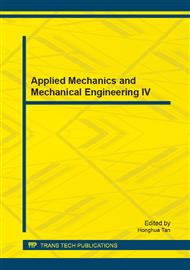p.207
p.212
p.222
p.228
p.232
p.239
p.245
p.251
p.256
Study on Improved Multi-Objective Adaptive Artificial Immune Genetic Algorithm
Abstract:
In this paper, the traditional NSGA model in solving multi-objective optimization problem exists the computational complexity, lack of elitism and the need to set shared radius etc. defects. we use the advantage of the artificial immune system, such as good generalization, self-organization and so on, propose a improved multi-objective adaptive artificial immune genetic algorithm that by the use of fast non-dominated sorting and crowding distance, reduces the algorithm complexity and improves its stability and versatility; utilizes the immune memory cells to optimize the population quality, accelerate the antibody reaction speed and raise the optimize efficiency; updates the populations by the non-inferior rank and crowding distance to improve the algorithm function of the search. This paper elaborates the algorithm steps in detail and verifies this algorithm. Through the three different dimensions of test functions, the simulation results show that this algorithm is effective and feasible.
Info:
Periodical:
Pages:
232-238
Citation:
Online since:
October 2013
Authors:
Price:
Сopyright:
© 2014 Trans Tech Publications Ltd. All Rights Reserved
Share:
Citation:


